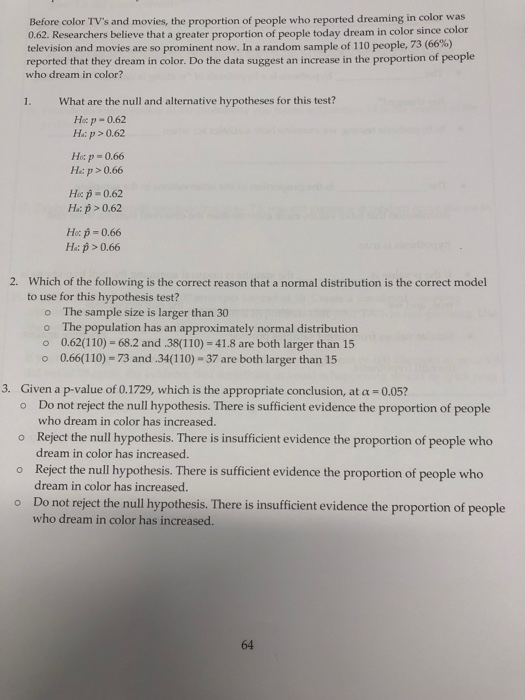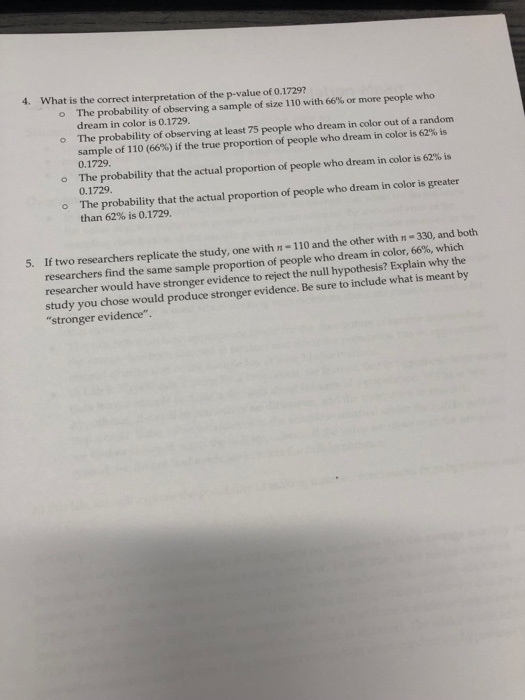Answered step by step
Verified Expert Solution
Question
1 Approved Answer
Before color TV's and movies, the proportion of people who reported dreaming in color was 0.62. Researchers believe that a greater proportion of people


Before color TV's and movies, the proportion of people who reported dreaming in color was 0.62. Researchers believe that a greater proportion of people today dream in color since color television and movies are so prominent now. In a random sample of 110 people, 73 (66%) reported that they dream in color. Do the data suggest an increase in the proportion of people who dream in color? 1. What are the null and alternative hypotheses for this test? Hoc p = 0.62 Ha: p > 0.62 O Ho: p=0.66 He: p > 0.66 Hoc p = 0.62 Ha: p>0.62 Ho: p=0.66 Ha: p > 0.66 2. Which of the following is the correct reason that a normal distribution is the correct model to use for this hypothesis test? o The sample size is larger than 30 O The population has an approximately normal distribution o 0.62(110) = 68.2 and .38(110) = 41.8 are both larger than 15 o 0.66(110)-73 and .34(110) -37 are both larger than 15 3. Given a p-value of 0.1729, which is the appropriate conclusion, at a = 0.05? O Do not reject the null hypothesis. There is sufficient evidence the proportion of people who dream in color has increased. o Reject the null hypothesis. There is insufficient evidence the proportion of people who dream in color has increased. o Reject the null hypothesis. There is sufficient evidence the proportion of people who dream in color has increased. Do not reject the null hypothesis. There is insufficient evidence the proportion of people who dream in color has increased. 64 4. What is the correct interpretation of the p-value of 0.1729? O O The probability of observing at least 75 people who dream in color out of a random sample of 110 (66%) if the true proportion of people who dream in color is 62% is 0.1729. o The probability that the actual proportion of people who dream in color is 62% is 0.1729. The probability of observing a sample of size 110 with 66% or more people who dream in color is 0.1729. O The probability that the actual proportion of people who dream in color is greater than 62% is 0.1729. 5. If two researchers replicate the study, one with n-110 and the other with n-330, and both researchers find the same sample proportion of people who dream in color, 66%, which researcher would have stronger evidence to reject the null hypothesis? Explain why the study you chose would produce stronger evidence. Be sure to include what is meant by "stronger evidence".
Step by Step Solution
★★★★★
3.36 Rating (152 Votes )
There are 3 Steps involved in it
Step: 1
1 Accord...
Get Instant Access to Expert-Tailored Solutions
See step-by-step solutions with expert insights and AI powered tools for academic success
Step: 2

Step: 3

Ace Your Homework with AI
Get the answers you need in no time with our AI-driven, step-by-step assistance
Get Started


